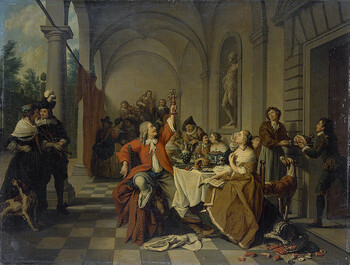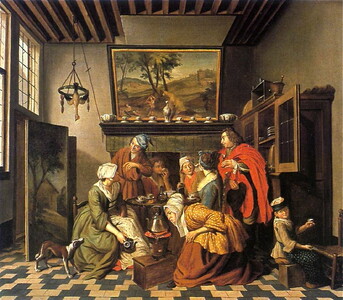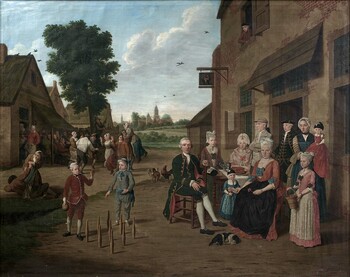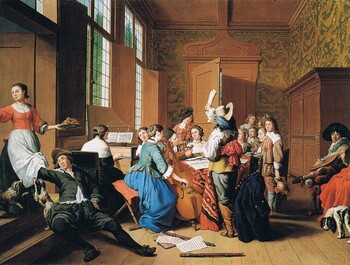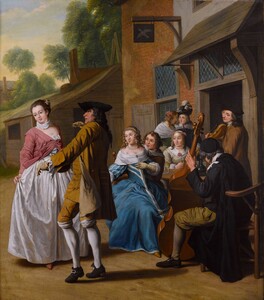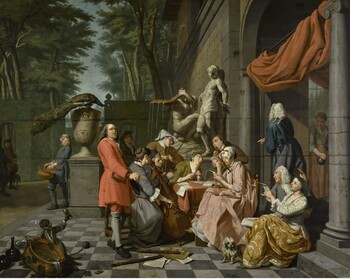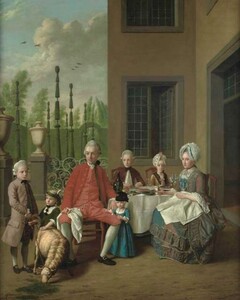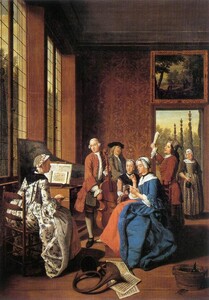Jan Jozef Horemans II
Elegant figures in 17th century costume playing music in an interior
Oil on canvas : 63 X 83,5 cm
Signed and dated lower left “J. Horemans / 1759”
Sold at Hampel Munich, 8/12/06
For 30.000 €
The Hampel auction catalogue erroneously mentions the date of 1779.
But this painting has already come up for sale previously in three other auctions; each time the date was read as 1759.
This is a comparative item
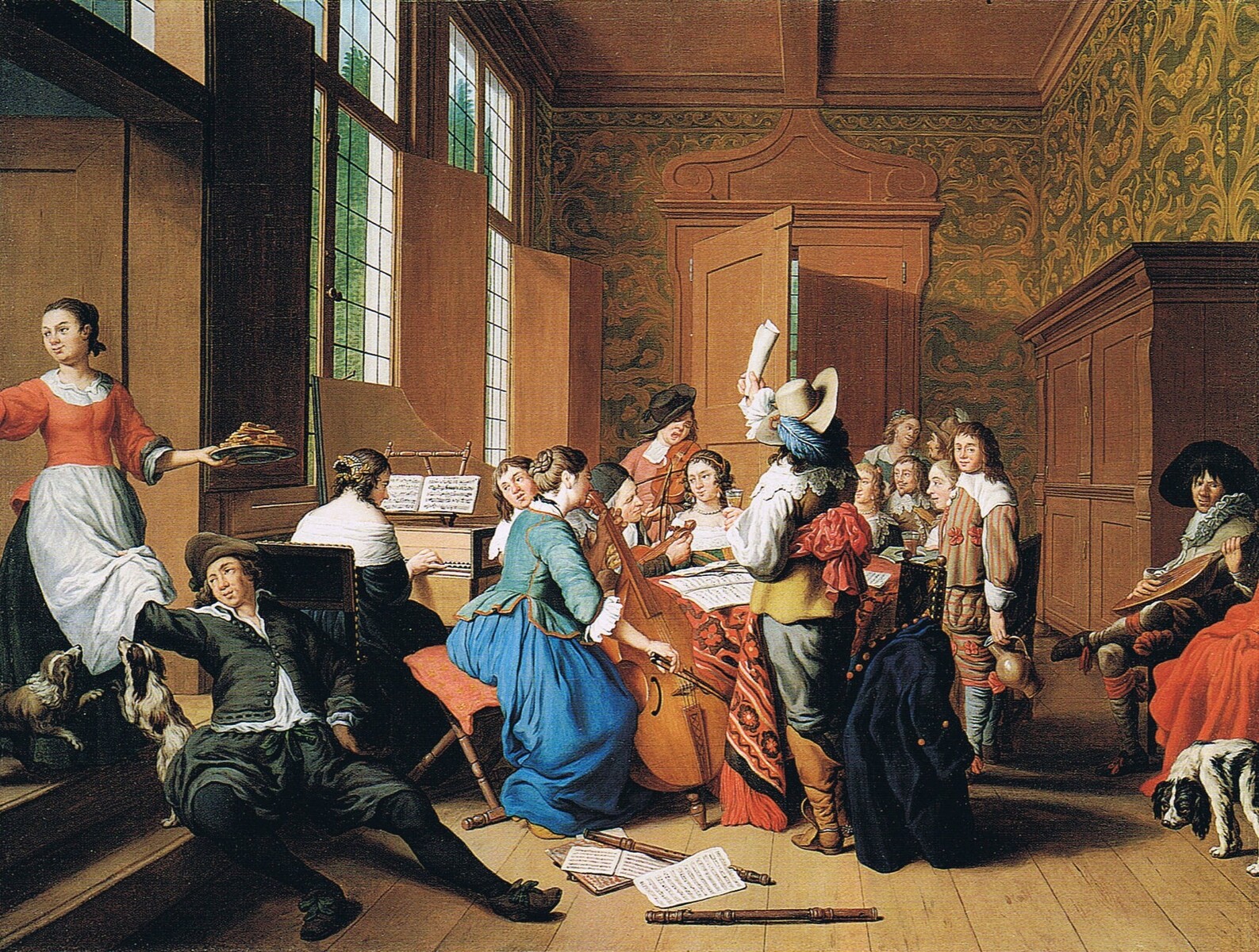
Painting for Sale
Horemans, Jan Jozef II
"A fancy social gathering during a crossbow competition"
About Jan Jozef Horemans II
Flemish painter
Antwerp 1714 – 1792 Antwerp
Son and pupil of his father Jan Jozef I (1682 – 1759). Both painters were widely admired for their bourgeois interior and exterior scenes that admirably catch the spirit of their age.
Both painters’ second first name is sometimes spelt Josef.
Jan Jozef the Younger was Dean of the Painters’ Guild of Saint Luke in Antwerp in 1768-69 and in 1775-76. As the son of a painter who was already a member of the Guild he seems not to have been in a hury to become himself a Master in the Guild; he only officially joined in 1767, seven years actually after his father passed away.
Our painter was also member of the newly created (1788) artistic circle called “De Konstmaetschappij”, where artists would gather every week to know more about the members’ artistic production.
He was strongly influenced by his father:
- both painted small, anecdotic paintings, representing pleasantly animated bourgeois interiors strongly inspired by traditional 17th century Flemish (David Teniers II and Hieronymus Janssens) and Dutch genre painting (Gabriel Metsu and Pieter de Hooch) and by the contemporary English so-called “conversation pieces” of William Hogarth;
- both used the same signature.
Still it is fairly easy to recognize the differences between father and son:
- the father used darker colours (hence his nickname “Le Sombre” or
“le brun”) and his figures are stiffer.
- the son had a more refined colour scheme, using lighter colours
(therefore his nick-name was “Le Clair”).
Comparative paintings
Click photos for more details

